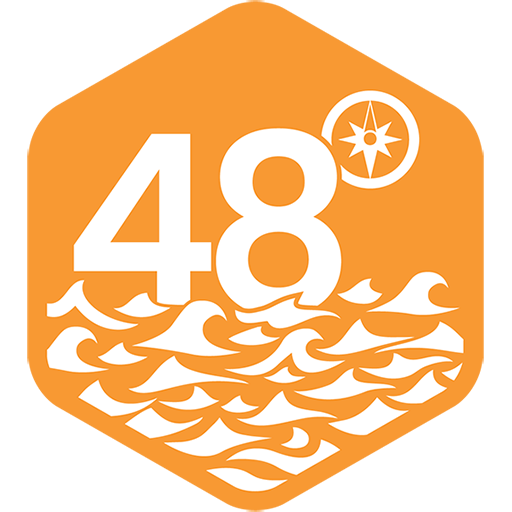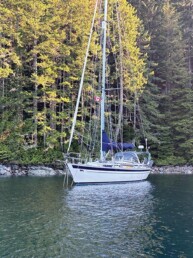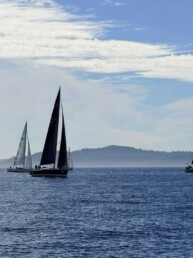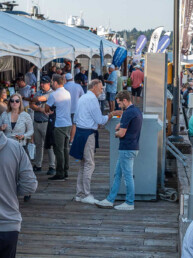As doublehand racing continues to gain traction, a new Wednesday night fleet is taking shape and encouraging more competitors to join in the fun.
If you’ve spent any time around Shilshole on a Wednesday evening, you’ve probably noticed what I have: the J/Boat fleet is awesome, but the PHRF weeknight racing scene at CYC has been thinning out. Fewer boats. Fewer small crews. A little less energy on the course than we used to see.
But just when I started to worry that Wednesday night racing was losing its spark, along came something new—and very exciting: Enter the ORC Doublehanded Class
Thanks to Alex Simanis and a few forward-thinking sailors, we now have a doublehanded ORC fleet in action at CYC. It’s exactly what it sounds like: just two people per boat, racing head-to-head under ORC. It’s open to small boats, it runs alongside the usual Wednesday night series from spring through fall, and it all leads to a proper championship regatta in October.
The class is still young—just three boats so far—but don’t let the numbers fool you. This is high-caliber racing. Blur (a B-25), TC (a Hobie 33), and Pell Mell (Alex’s Pt. Bonita 27) are tight, quick boats sailed by sharp crews. I’ve raced in big fleets and I’ve raced in small fleets, and this is one of the most competitive groups I’ve been a part of in a while.
Bring What You’ve Got—and Bring Your A-Game
The beauty of this class is that it’s accessible. You don’t need a brand-new race boat. You just need an ORC certificate (ours cost around $100) and a boat that can handle the Sound. Blur was built in the 1990s, and the others are from the 1980s—proving you can be fast without being flashy.
And once you’re out there, the racing is real. Pell Mell’s results speak for themselves, and TC isn’t far behind. Every week, I find myself learning something new—even if it means getting my butt kicked along the way.
Two-Person Sailing, Ten-Person Workload
Let me be honest: doublehanded racing is not for the faint of heart. With just two people on board, you’re handling sails, driving, trimming, navigating, calling tactics, and avoiding collisions—often all at the same time. Autopilots are allowed (and helpful before and after races), but during the heat of the moment, you’re the sailor and the system.
It’s the kind of racing where you need a plan, backup plan, and maybe a third hand you don’t have. I’ve definitely had moments where I’m biting a line in my teeth (not recommended by dentists or anyone), wishing I had an extra arm, and laughing at how ridiculous—but awesome—it all feels.
The Joy of Syncing Up
One of the surprising pleasures of doublehanded sailing is how tight you get with your crewmate. When it’s going well, it really starts to feel like a Vulcan mind meld.
“You’re pinching.”
“Puff coming.”
“We need to tack.”
You start reading each other without needing to explain. It’s part choreography, part telepathy, and all trust.
The Long Game
Our courses are designed with the format in mind—longer legs, fewer maneuvers, and enough runway to let the boats stretch out. We typically get one race per night, which is just right when you’re doublehanding and don’t want to wear out your foredeck crew (who is also your main trimmer and jib trimmer and pit).
Why I Keep Showing Up
So why am I out there doing this every week? Because I love it. The competition is fierce, the learning curve is steep, and the vibe is just right. These are the kinds of sailors you want to be around—smart, fast, and welcoming.
The fleet is still growing, and I can’t wait to see what it becomes. We’ve got the boats. We’ve got the sailors. We’ve got the format. All we need now is more of you out there with us.
So if you’ve got a small boat and some grit, grab a crewmate, get your ORC cert, and join us. You’ll get pushed. You’ll get better. And yeah—you might just get your ass kicked. But you’ll love every minute of it.
Check out more at cycseattle.org.






